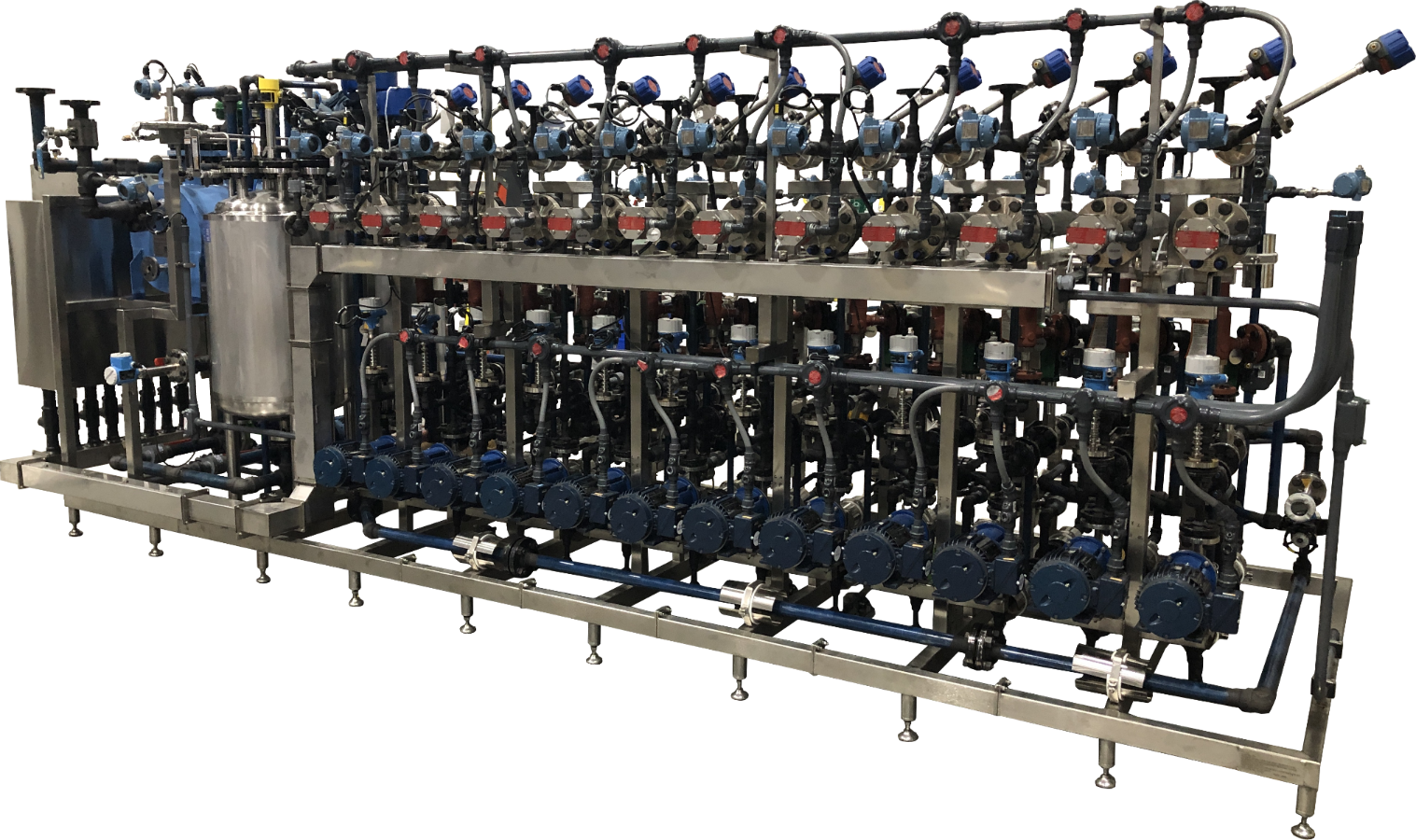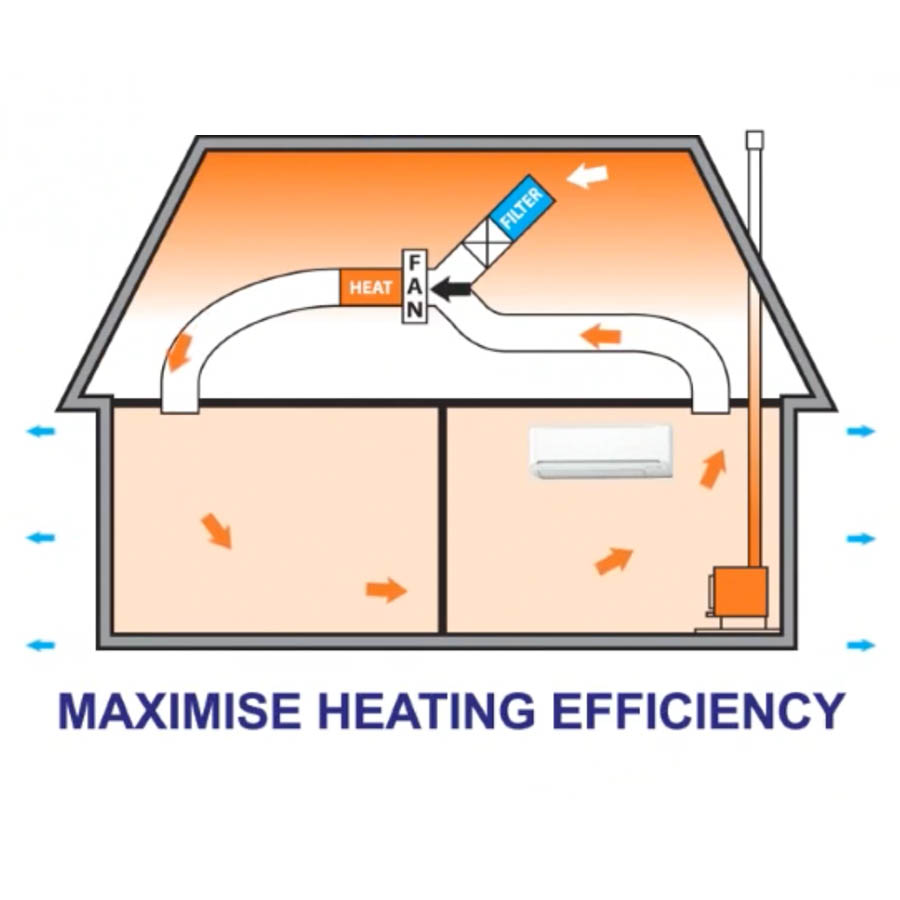Step-by-Step Installation Guide for DVS Heat Transfer Systems in Smart Manufacturing
A Comprehensive Overview to Selecting the Right Heat Transfer Systems for Your Requirements
Picking the proper Heat transfer system is crucial for operational efficiency. Different systems deal with various needs, affected by variables such as temperature array and liquid type. Understanding the principles behind Heat transfer, such as convection, radiation, and transmission, is crucial. Furthermore, reviewing power sources and maintenance techniques can influence lasting efficiency. A closer evaluation of these factors to consider discloses just how to customize a system to specific demands. What should one prioritize in this facility decision-making process?
Comprehending Heat Transfer: Key Ideas and Concepts
Heat transfer may seem like an uncomplicated principle, it includes an array of principles that are fundamental for efficient system layout - DVS Heat Transfer Systems. Recognizing these principles is vital for designers and designers that aim to maximize thermal efficiency in numerous applications. Transmission, for example, involves the transfer of Heat through strong products, while convection describes the motion of Heat within liquids. Radiation, an additional key concept, explains how Heat can be moved via electro-magnetic waves. Each of these mechanisms plays a vital function in establishing exactly how power relocates within a system. By extensively grasping these principles, professionals can make educated choices, making sure that Heat transfer systems operate effectively and satisfy the particular demands of their applications
Kinds of Heat Transfer Systems: A Review
Recognizing the principles of Heat transfer prepares for discovering the various kinds of Heat transfer systems available. Heat transfer systems can be categorized primarily into three kinds: convection, radiation, and transmission. Transmission entails Heat transfer with solid products, depending on straight call in between fragments. Convection, on the various other hand, happens in fluids (liquids and gases) where the activity of the fluid itself facilitates Heat transfer. Radiation includes the transfer of Heat via electro-magnetic waves and does not call for a medium, enabling it to occur in a vacuum. Each kind of system has distinct qualities and applications, making it essential for individuals and organizations to very carefully evaluate their particular needs when picking the most ideal Heat transfer solution.
Applications of Heat Transfer Systems in Numerous Industries
Heat transfer systems play a necessary function throughout various markets, impacting effectiveness and item quality. In commercial manufacturing procedures, they facilitate exact temperature level control, while in food and beverage processing, they ensure safety and preservation. Additionally, HVAC and climate control systems depend greatly on reliable Heat transfer to preserve comfortable settings.
Industrial Manufacturing Processes

Numerous industrial manufacturing processes count greatly on effective Heat transfer systems to make the most of efficiency and boost product high quality. In industries such as metalworking, Heat exchangers play a vital duty in keeping excellent temperatures during welding, spreading, and forging. These systems ensure consistent Heat circulation, which is essential for accomplishing wanted material residential or commercial properties. In a similar way, in the chemical production sector, Heat transfer systems promote precise temperature control during reactions, influencing yield and security. In fabric manufacturing, effective Heat monitoring is vital for coloring and completing processes, influencing shade uniformity and fabric quality. By picking ideal Heat transfer innovations, producers can boost power effectiveness and decrease functional expenses, ultimately causing a much more sustainable and affordable manufacturing setting.
Food and Beverage Handling
Efficient Heat transfer systems are similarly important in the food and drink processing sector, where preserving optimal temperatures is critical for food security and quality. These systems play a necessary role in processes such as pasteurization, sterilization, and cooking, ensuring that products are secure for intake and retain their nutritional worth. Heat exchangers, for example, efficiently move Heat in between liquids, enhancing power usage while decreasing temperature variations. Additionally, refrigeration systems are essential for extending and maintaining subject to spoiling products service life. The selection of Heat transfer innovation straight influences operational effectiveness and item stability, making it crucial for food and drink producers to select the ideal systems tailored to their particular processing requirements. This careful selection ultimately adds to consumer complete satisfaction and food safety and security.

Heating And Cooling and Climate Control
While lots of industries depend on Heat transfer systems for efficiency, HEATING AND COOLING (Home Heating, Ventilation, and Cooling) plays an important role in preserving interior climate control across numerous setups. These systems use Heat transfer principles to control air, temperature, and moisture top quality, making certain convenience and safety and security in domestic, business, and commercial atmospheres. Properly created cooling and heating systems improve energy efficiency, lower operational expenses, and decrease environmental influence. In industrial structures, as an visite site example, reliable environment control adds to employee productivity and client satisfaction. In industrial applications, heating and cooling systems help keep suitable problems for tools operation and item preservation. Selecting the right Heat transfer system is important for conference specific environment control needs and attaining overall system efficiency.
Reviewing Power Resources for Heat Transfer Solutions
In assessing power resources for Heat transfer systems, a contrast of renewable resource alternatives and nonrenewable fuel source factors to consider is important. Sustainable sources, such as solar and wind, offer sustainable options that can lower environmental influence. Alternatively, nonrenewable fuel sources remain prevalent as a result of their established infrastructure and power thickness, triggering a careful assessment of both options.
Renewable Resource Options

Nonrenewable Fuel Source Considerations
Reviewing fossil gas factors to consider is vital for the efficiency and sustainability of Heat transfer systems. Fossil fuels, such as gas, oil, and coal, are conventional energy resources that offer substantial Heat output, making them prominent choices for commercial and domestic applications. Nonetheless, their ecological impact, including greenhouse next page gas discharges and source deficiency, raises worries. When picking a heat transfer system, it is essential to examine the accessibility, price, and regulatory aspects associated with these gas. Furthermore, the performance of nonrenewable fuel source systems must be considered, as greater efficiency can reduce some ecological drawbacks. Ultimately, a balanced strategy weighing efficiency and sustainability can direct decision-makers towards the most proper Heat transfer solution for their details requirements.
Variables to Think About When Selecting a Warm Transfer System
Picking a proper Heat transfer system calls for careful factor to consider of various elements that can substantially impact effectiveness and performance. One crucial aspect is the operating temperature range, which determines the materials and design suitable for the application. Furthermore, the sort of fluid made use of in the system-- whether gas or liquid-- impacts Heat transfer effectiveness and compatibility. The system's dimension and capability need to line up with the certain demands of the operation to stay clear of ineffectiveness. Energy resource schedule is also essential, influencing operating costs and sustainability. Furthermore, the installment setting, consisting of area constraints and ease of access for maintenance, plays a significant role in system option. Ultimately, governing compliance and safety standards should be thought about to guarantee the system meets all legal requirements.
Maintenance and Performance Optimization for Heat Transfer Systems
Preserving Heat transfer systems is essential for ensuring maximum effectiveness and durability. Regular upkeep tasks, such as cleaning up Heat exchangers and checking insulation, help stop performance losses because of fouling and thermal bridging. Furthermore, keeping track of system criteria, including pressure and temperature, permits early detection of abnormalities, minimizing downtime and expensive repair work. Carrying out a preventative maintenance timetable can optimize performance and extend the lifespan of elements. Moreover, updating to advanced control systems can enhance functional performance by getting used to differing conditions and loads. By prioritizing upkeep and efficiency optimization, operators can attain lowered power consumption, lower operational expenses, and boosted overall system dependability, eventually bring about better resource utilization and an extra lasting procedure.
Future Patterns in Heat Transfer Technologies
As sectors increasingly prioritize read this article sustainability and energy efficiency, future trends in Heat transfer modern technologies are readied to undergo considerable transformations. Advancements such as sophisticated materials, consisting of carbon nanotubes and nanofluids, promise improved thermal conductivity and efficiency. Additionally, the integration of renewable resource sources into Heat transfer systems is obtaining momentum, promoting environment-friendly remedies. Smart modern technologies, including IoT sensors, are expected to reinvent tracking and control, making it possible for real-time information evaluation for enhanced performance. The growth of portable and modular systems will certainly assist in less complicated setup and maintenance, providing to diverse applications. These developments suggest a change towards even more sustainable, reliable, and adaptable Heat transfer options, aligning with international energy goals and ecological standards.
Regularly Asked Inquiries
What Are the Ecological Effects of Heat Transfer Solutions?
The ecological impacts of Heat transfer systems can consist of greenhouse gas discharges, power consumption, and prospective thermal air pollution. Additionally, inappropriate disposal of products and ineffectiveness can add to source deficiency and ecological community interruption.
Exactly how Do I Calculate the Cost-Effectiveness of a Warmth Transfer System?
To compute the cost-effectiveness of a heat transfer system, one must evaluate preliminary prices, operational expenses, maintenance demands, and energy performance, contrasting these factors against the anticipated life expectancy and performance of the system.
Can Heat Transfer Solution Be Utilized in Residential Settings?
Heat transfer systems can indeed be made use of in domestic settings. They provide reliable heating and cooling down options, making homes a lot more comfortable while potentially reducing energy expenses. Their adaptability allows for numerous applications in residential environments.
What Security Regulations Apply to Heat Transfer Equipments?
Safety and security policies for Heat transfer systems typically consist of guidelines on installation, maintenance, and operation. Compliance with regional building codes, manufacturer requirements, and industry requirements is important to guarantee reliable and secure system efficiency in various applications.
Just How Do Various Materials Affect Heat Transfer Performance?

Transmission, for circumstances, includes the transfer of Heat through strong products, while convection refers to the movement of Heat within liquids. Understanding the concepts of Heat transfer lays the foundation for discovering the numerous types of Heat transfer systems available. Heat exchangers, for instance, successfully move Heat between fluids, optimizing power usage while reducing temperature level variations. In reviewing energy sources for Heat transfer systems, a contrast of renewable power choices and fossil fuel considerations is important. Metals, such as copper and aluminum, conduct Heat efficiently, whereas insulators like rubber and glass reduce down Heat flow.